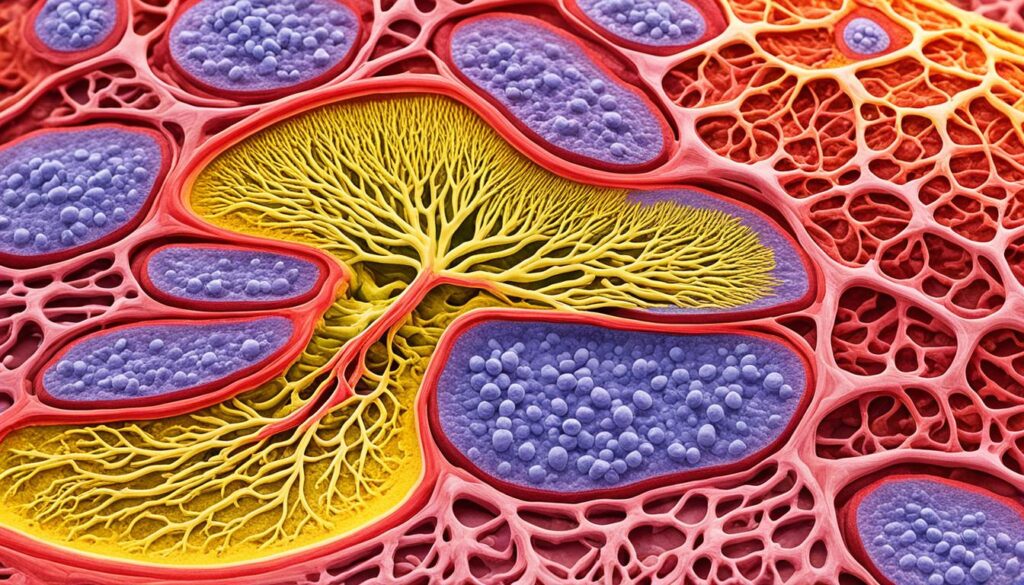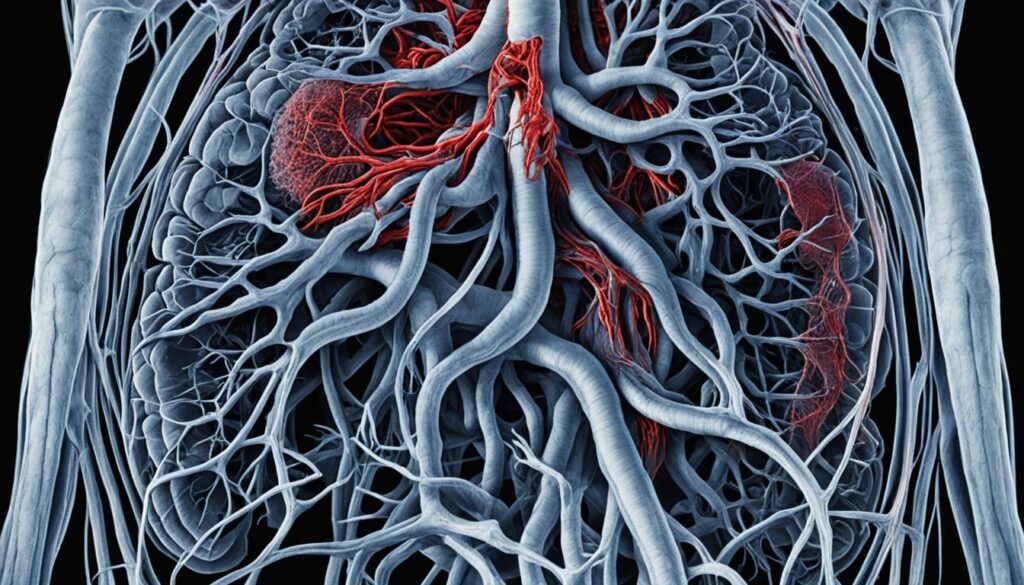If you have a newborn baby or are expecting one, it’s important to be aware of potential health conditions that may affect them. One such condition is biliary atresia, a rare disease that affects the liver and bile ducts in infants. This article will provide you with essential information on biliary atresia, its main symptom – jaundice, and the importance of maintaining liver health.
Table of Contents
ToggleLet’s dive into the details of biliary atresia and how it can impact your baby’s health. With early diagnosis and appropriate treatment, we can help prevent serious complications and ensure your little one’s well-being. Stay informed and empowered when it comes to your child’s health – continue reading to learn more about biliary atresia and jaundice.
Causes of Biliary Atresia
The exact causes of biliary atresia are not fully understood. However, research suggests that there are two main factors that may contribute to the development of this condition.
Bile Duct Abnormalities during Pregnancy
In some cases, biliary atresia may be caused by the improper formation of the bile ducts during fetal development. The bile ducts are responsible for carrying bile, a substance produced by the liver, to the gallbladder and intestines. When the bile ducts are not formed correctly, it can lead to blockages and impair the flow of bile, resulting in biliary atresia.
Immune Response to Viral Infection
Another possible cause of biliary atresia is damage to the bile ducts as a result of the body’s immune system response to a viral infection after birth. Viral infections, such as cytomegalovirus (CMV), reovirus, and rotavirus, have been associated with biliary atresia. It is believed that these viruses trigger an autoimmune response, leading to inflammation and damage to the bile ducts.
It’s important to note that there is no known link between biliary atresia and medications taken during pregnancy.

Understanding the causes of biliary atresia is crucial in developing effective treatment strategies and preventive measures. Further research is needed to fully comprehend the complexities of this condition and improve the outcomes for affected infants.
Risk Factors for Biliary Atresia
Biliary atresia, a rare disorder that affects approximately one in 15,000 babies, does not have any specific known risk factors. However, certain factors may increase the likelihood of developing this condition.
Gender
Biliary atresia occurs more commonly in girls than in boys. While the exact reason for this gender difference is unknown, researchers believe that hormonal and genetic factors may contribute to the higher incidence in females.
Family History
Although biliary atresia is not typically inherited, having a family history of this condition may slightly increase the risk. However, most cases of biliary atresia occur sporadically, without any known family connection.
It’s important to note that even if your baby does not have any of these risk factors, they can still develop biliary atresia. The condition can affect any baby, regardless of gender or family history.
To better understand the risk factors for biliary atresia, refer to the table below:
| Risk Factors | Description |
|---|---|
| Gender | More common in girls than in boys |
| Family History | May slightly increase the risk, but most cases occur sporadically |
While these factors can provide insights, biliary atresia can develop in any baby, regardless of their gender or family history. It is a rare and unpredictable condition that requires medical attention for accurate diagnosis and appropriate treatment.
Now, let’s proceed to the next section to understand the symptoms of biliary atresia.
Symptoms of Biliary Atresia
Symptoms of biliary atresia typically appear within the first two months of life. Early recognition and prompt medical attention are crucial in managing this condition. If you notice any of the following symptoms in your newborn, please consult a healthcare professional:
1. Jaundice
Jaundice is the primary symptom of biliary atresia. It is characterized by the yellowing of the skin and eyes due to the buildup of bilirubin in the bloodstream. Elevated levels of bilirubin occur because the bile produced by the liver cannot flow properly into the small intestine.
2. Pale Stools
A hallmark sign of biliary atresia is acholic or pale stools. The absence of normal brown-colored stools indicates a lack of bile pigment in the digestive system. Instead, the stools may appear whitish or clay-colored.
3. Dark Urine
Dark-colored urine can also be a symptom of biliary atresia. The excess bilirubin in the bloodstream can be eliminated through the kidneys, leading to the presence of dark-colored urine.
4. Weight Loss
Infants with biliary atresia may experience difficulty in gaining weight or may even lose weight. This can be attributed to the impaired digestion and absorption of nutrients resulting from the blocked bile flow.
5. Irritability
Irritability and a general sense of discomfort may be observed in babies with biliary atresia. The underlying liver dysfunction can cause overall discomfort, leading to increased fussiness.
If your baby exhibits any of these symptoms or if you have concerns about their health, it is important to reach out to a healthcare professional for appropriate evaluation and guidance.

What if you ignore the symptoms?
Ignoring the symptoms of biliary atresia can lead to progressive liver damage and complications. Early intervention is essential to prevent the development of cirrhosis and liver failure, which may require more invasive treatments such as liver transplantation.
Consulting a healthcare professional at the earliest sign of symptoms can significantly improve the prognosis and long-term well-being of infants with biliary atresia.
Diagnosis of Biliary Atresia
Diagnosing biliary atresia requires a series of tests. Blood tests are done to check for liver function abnormalities and to identify the cause of jaundice. An abdominal ultrasound can determine if there is a blockage in the bile ducts. A liver biopsy may be performed to confirm the diagnosis and assess the severity of liver damage. Other imaging tests, such as an operative cholangiogram, may be used to create a new passage for the bile.
| Diagnostic Tests for Biliary Atresia | Procedure |
|---|---|
| Blood tests | Checking for liver function abnormalities and identifying the cause of jaundice. |
| Abdominal ultrasound | Determining if there is a blockage in the bile ducts. |
| Liver biopsy | Confirming the diagnosis and assessing the severity of liver damage. |
| Operative cholangiogram | Creating a new passage for the bile. |
These diagnostic tests provide crucial information for healthcare providers to accurately diagnose biliary atresia. Blood tests help identify any abnormalities in liver function, which can indicate liver disease. An abdominal ultrasound is a non-invasive imaging procedure that uses sound waves to visualize the liver, bile ducts, and other abdominal organs. It can reveal any blockages or abnormalities in the bile ducts. A liver biopsy involves taking a small sample of liver tissue for examination under a microscope, providing definitive confirmation of biliary atresia and assessing the extent of liver damage. Other imaging tests, such as an operative cholangiogram, may be performed if necessary to create a new pathway for bile flow.
Treatment of Biliary Atresia
Biliary atresia is a complex condition that requires specialized treatment to manage the blocked bile ducts and prevent further liver damage. While medication alone cannot address the underlying issue, there are two primary treatment options available: the Kasai procedure and liver transplant.
The Kasai procedure is a surgical intervention performed in infants diagnosed with biliary atresia. This procedure aims to restore bile flow by creating a connection between the liver and the small intestine, bypassing the blocked ducts. It is crucial to perform the Kasai procedure before the baby reaches 8 weeks old for maximum effectiveness.

Kasai Procedure Success Rate
The success of the Kasai procedure depends on various factors, including the age at which the surgery is performed and the overall condition of the liver. The procedure has shown promising outcomes in many cases, with bile flow restored and liver function improved. However, it is important to note that the Kasai procedure may not be successful in all cases.
Despite the success of the Kasai procedure, some infants may require additional treatment options if bile flow is not adequately restored or if the liver becomes severely damaged. In such cases, a liver transplant may be necessary to replace the diseased liver with a healthy one from a donor.
Liver Transplant for Biliary Atresia
A liver transplant is a major surgical procedure that offers a long-term solution for infants with advanced liver disease caused by biliary atresia. During the transplant, a healthy liver from a donor is surgically implanted, replacing the damaged liver. Liver transplantation provides new hope for infants who have experienced liver failure or whose condition did not improve with the Kasai procedure.
Comparing the Kasai Procedure and Liver Transplant
| Aspect | Kasai Procedure | Liver Transplant |
|---|---|---|
| Bile Flow | Attempts to restore bile flow by bypassing the blocked ducts | Restores normal bile flow by replacing the damaged liver |
| Success Rate | Successful in many cases, especially when performed early | High success rate, especially with advancements in transplantation techniques |
| Long-Term Outcome | May require additional treatments or a liver transplant if insufficient bile flow or liver damage persists | Offers a long-term solution for infants with advanced liver disease |
Each treatment option has its own benefits and considerations. The decision between the Kasai procedure and liver transplant is made based on the individual patient’s condition, age, and severity of liver damage. It is essential to consult with a pediatric liver specialist to determine the most appropriate treatment plan.
Management of Nutrition in Biliary Atresia
Children with biliary atresia may experience challenges in digesting and absorbing nutrients due to reduced bile flow to the small intestine. To ensure that infants and children with biliary atresia receive adequate nutrition and calories, doctors may recommend a special eating plan and supplements.
An essential component of the nutrition management plan is the use of special formulas designed to optimize nutrient absorption. These formulas are carefully formulated to provide the necessary macronutrients, vitamins, and minerals that may be lacking in the child’s diet. They are often easier to digest and absorb, ensuring that the child receives the necessary nutrients to support optimal growth and development.
In addition to specialized formulas, doctors may also recommend vitamin supplements to address any specific deficiencies observed in the child’s blood tests. Vitamins A, D, E, and K are commonly included in the supplementation plan, as these are important for overall health and proper functioning of essential body systems.

Furthermore, the addition of medium-chain triglyceride (MCT) oil to foods and liquids can help facilitate nutrient absorption in children with biliary atresia. MCT oil has shorter fatty acid chains, making it easier for the digestive system to break down and absorb. This can help ensure that the child receives the necessary calories to support healthy growth and weight gain.
It is crucial for parents and caregivers to work closely with healthcare providers and registered dietitians to create a tailored nutrition plan that meets the individual needs of the child. Regular monitoring of the child’s growth and nutritional status is essential to make any necessary adjustments to the nutrition management plan.
| Nutrition Management in Biliary Atresia | Benefits |
|---|---|
| Specialized Formulas |
|
| Vitamin Supplements |
|
| MCT Oil |
|
Complications of Biliary Atresia
Complications can arise both immediately after surgery and as the disease progresses in cases of biliary atresia. It is important to be aware of these potential complications in order to promptly recognize and address them.
Infections of the Bile Ducts and Itching
After undergoing the Kasai procedure, which is the primary surgery for biliary atresia, infections of the bile ducts and itching are common. These complications can be managed with medications prescribed by your healthcare provider.
Changes in Blood Flow
In some cases, biliary atresia can lead to changes in blood flow. This may result in bruising, nosebleeds, and fluid retention. It is important to notify your healthcare provider if you observe any unusual changes in your child’s blood flow or experience concerning symptoms.
Increased Pressure in the Veins
In severe cases of biliary atresia, increased pressure in the veins can cause serious bleeding in the stomach and intestines. This can be life-threatening and requires immediate medical attention. If you notice any signs of internal bleeding, such as severe abdominal pain or vomiting blood, seek emergency medical care.
Liver Transplantation
As biliary atresia progresses and liver function declines, a liver transplant may become necessary. In this procedure, a damaged liver is replaced with a healthy liver from a donor. Liver transplantation can provide a lifeline for individuals with advanced liver disease and cirrhosis.
Regular follow-up appointments with your healthcare provider are crucial to monitor for complications and ensure appropriate management. By staying vigilant and proactive in managing biliary atresia, you can optimize your child’s liver health and overall well-being.

Liver Transplant for Biliary Atresia
If the Kasai procedure is not successful or if the liver becomes severely damaged, a liver transplant may be required. A liver transplant involves removing the damaged liver and replacing it with a healthy liver from a donor.
Cincinnati Children’s Hospital has one of the largest and oldest pediatric liver transplant programs in the United States, providing specialized care for children with biliary atresia. The hospital’s experienced team of surgeons and medical professionals are dedicated to improving the survival rates and overall outcomes of patients undergoing liver transplants.
A liver transplant can significantly improve the quality of life for children with biliary atresia who have exhausted other treatment options. This procedure offers the possibility of restoring normal liver function and preventing further liver damage.
Benefits of Liver Transplant
- Restores normal liver function
- Improves overall health and well-being
- Prevents further liver damage and complications
- Enhances long-term survival
| Survival Rate | Age Group |
|---|---|
| 1 year post-transplant | 90% |
| 5 years post-transplant | 80% |
| 10 years post-transplant | 70% |
It is important to note that the survival rate may vary depending on several factors, including the child’s overall health, the success of the transplant surgery, and post-transplant care and medication adherence.
When considering a liver transplant for a child with biliary atresia, the transplant team at Cincinnati Children’s Hospital conducts thorough evaluations to determine the child’s eligibility. Factors such as age, general health, and availability of suitable donors are taken into account.
If a liver transplant is recommended, the child will be placed on a waiting list for a compatible donor liver. The wait time for a liver can vary, but Cincinnati Children’s Hospital aims to minimize waiting times to ensure prompt access to transplantation.
Throughout the transplantation process, the child and their family receive extensive support and care from a multidisciplinary team of healthcare professionals, including surgeons, hepatologists, nurses, and nutritionists. This comprehensive approach ensures the best possible outcomes for children with biliary atresia undergoing liver transplants.
Conclusion
Biliary atresia is a rare liver disease that primarily affects infants. Early diagnosis and prompt treatment are crucial in managing this condition and improving long-term survival rates. The Kasai procedure, a surgical intervention that bypasses the blocked bile ducts, has proven to be effective, especially when performed before the baby is 8 weeks old.
If the Kasai procedure fails to restore normal bile flow or if the liver becomes severely damaged, a liver transplant may be necessary. In such cases, replacing the damaged liver with a healthy liver from a donor can offer a new lease on life to those affected by biliary atresia.
Maintaining liver health and overall well-being is vital for children with biliary atresia. Regular follow-up appointments and close monitoring of nutrition are essential to ensure proper growth and development. Adhering to a recommended eating plan and incorporating vitamin supplements, such as vitamins A, D, E, and K, can help provide adequate nutrition. Additionally, medium-chain triglyceride (MCT) oil can be added to foods and liquids to facilitate digestion and maximize calorie intake.
In conclusion, biliary atresia is a challenging condition, but with early intervention, appropriate treatments, and ongoing care, children with biliary atresia can lead fulfilling lives. By prioritizing liver health and working closely with healthcare providers, families can provide the best possible support for their loved ones affected by this rare liver disease.
FAQ
What is biliary atresia?
Biliary atresia is a rare disease of the liver and bile ducts that occurs in infants. It is characterized by the blockage of bile flow from the liver to the gallbladder, leading to liver damage and scarring.
What are the main signs of biliary atresia?
The main signs of biliary atresia are jaundice (yellowing of the skin) and pale stools.
What are the causes of biliary atresia?
The exact causes of biliary atresia are not fully understood. In some cases, it may be due to improper formation of the bile ducts during pregnancy. Other cases may be caused by damage to the bile ducts from the body’s immune system in response to a viral infection after birth.
Are there any known risk factors for biliary atresia?
There are no specific known risk factors for biliary atresia, and it does not usually occur within the same family. However, it is more common in girls than in boys.
What are the symptoms of biliary atresia?
The main symptom of biliary atresia is jaundice, which is characterized by yellowing of the skin and eyes. Other symptoms may include dark urine, pale stools, weight loss, and irritability.
How is biliary atresia diagnosed?
Diagnosing biliary atresia requires a series of tests, including blood tests to check for liver function abnormalities, an abdominal ultrasound to determine if there is a blockage in the bile ducts, and a liver biopsy to confirm the diagnosis and assess the severity of liver damage.
How is biliary atresia treated?
Biliary atresia cannot be treated with medication. The main treatment is a surgical procedure called the Kasai procedure, which involves connecting the liver to the small intestine to bypass the blocked bile ducts. A liver transplant may be necessary if bile flow is not restored or if the liver becomes severely damaged.
How is nutrition managed in children with biliary atresia?
Children with biliary atresia may have difficulties in digestion and absorption of nutrients. A special eating plan and supplements, including special formulas, vitamin supplements, and the addition of medium-chain triglyceride (MCT) oil, may be recommended by doctors to ensure adequate nutrition and calorie intake.
What are the complications of biliary atresia?
Complications of biliary atresia can include infections of the bile ducts, changes in blood flow leading to bruising and nosebleeds, fluid retention, and in severe cases, serious bleeding in the stomach and intestines. Liver transplantation may be necessary if the condition worsens and liver function declines.
When is a liver transplant required for biliary atresia?
A liver transplant may be required if the Kasai procedure is not successful or if the liver becomes severely damaged. Cincinnati Children’s Hospital has one of the largest and oldest pediatric liver transplant programs in the United States, with improved survival rates and shorter waiting times for a new liver.
Source Links


